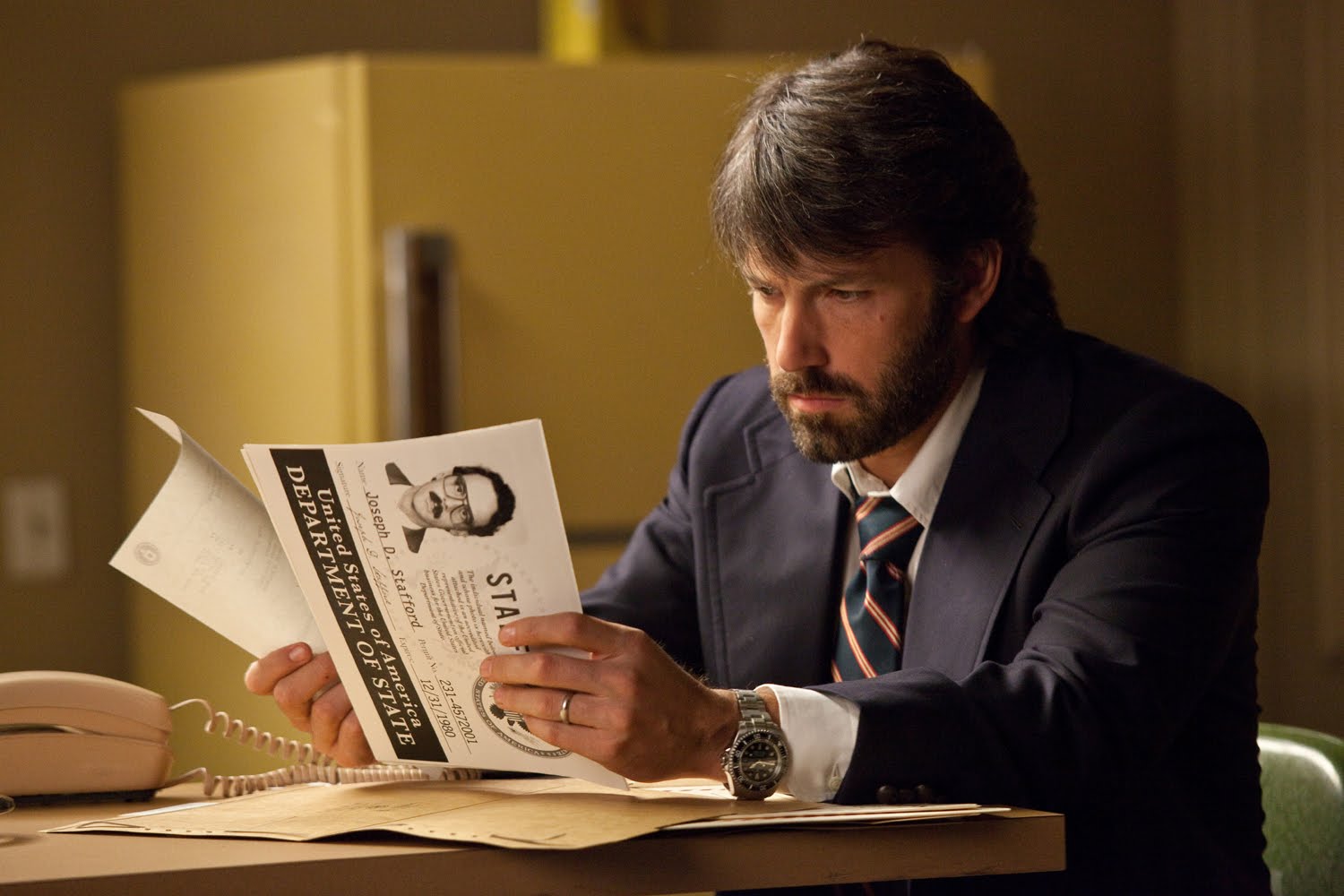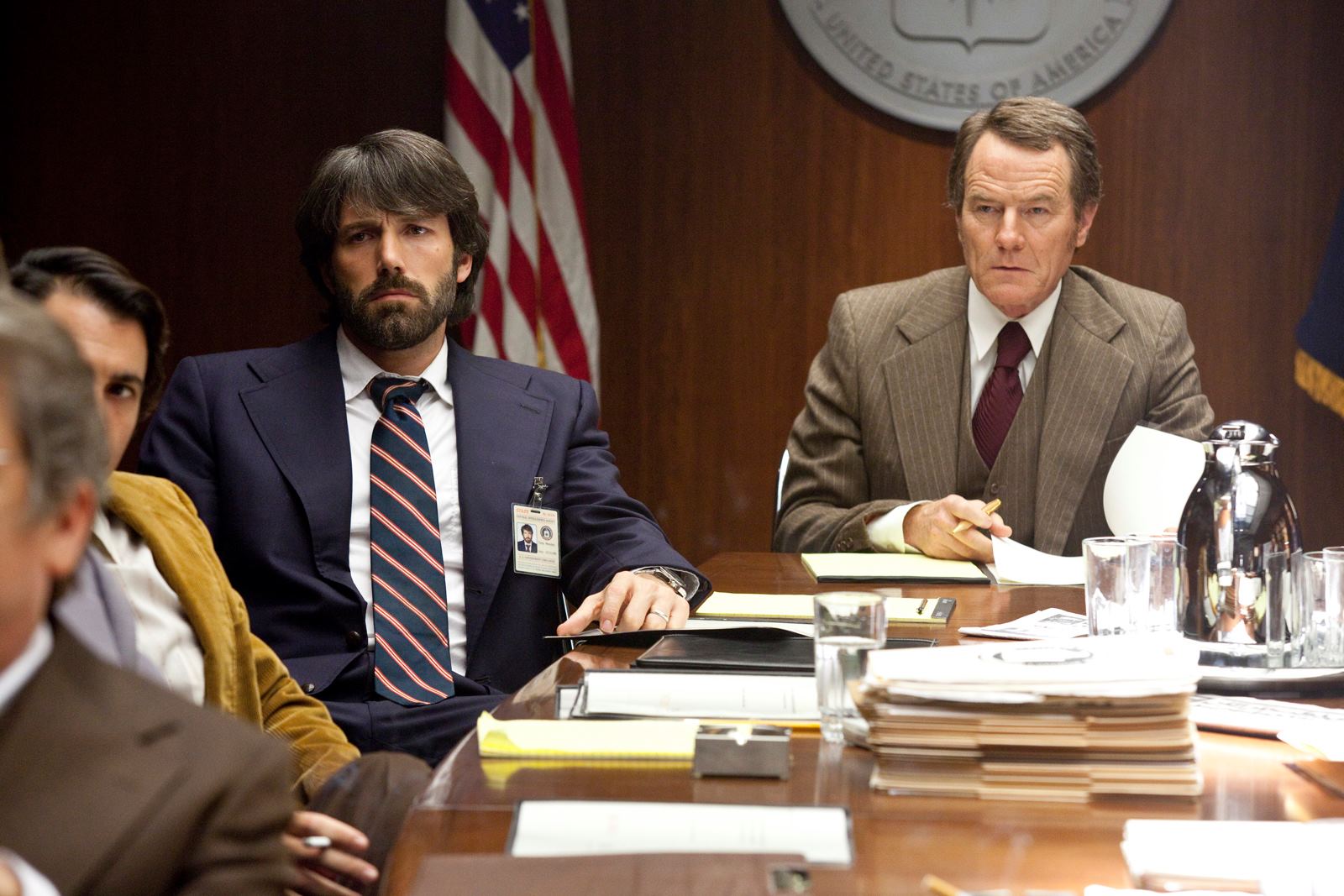|
In
1979 protests in Iran break out over the countries leadership, forcing
violent
attacks on the US embassy. Six Americans in the embassy manage to flee
and take
refuge in a house of Canadian ambassador Ken Taylor (Victor Garber).
Yet it
becomes increasingly likely that their faces are going to be recognised
and they'll
be tracked down. The CIA decides that they must come up with a plan to
try and
rescue these people. Enter Tony Mendez (Ben Affleck), a burnt-out agent
who is isolated
from his family, including his young son. Offset by the CIA's
incompetence,
Mendez hatches his own rescue plan: to pitch a fake movie, pretend to
shoot it
in Iran and have the six hostages pose as a film crew to transport them
secretly out of the country. He has the
support of his fellow agent Jack O'Donnell (Bryan Cranston) but needs
proper
film aid. This comes in the form of crabby film producer Lester Siegel
(Alan
Arkin) and makeup artist John Chambers (John Goodman), who supply a
script for
a science fiction film called "Argo" as their cover. Travelling into
the hostility of Iran, Mendez must convince the six embassy workers of
their
new roles and help them memorise their fake identities.

Argo is Ben
Affleck's third film as an actor turned director and arguably his most
important. The film is based on a true story, however unlikely, but
contains
uncanny modern day parallels. The recent attack on a US embassy in
Libya, for
example, is a frightening coincidence. But the movie is also founded in
a deep
political subtext about the way that global events are fictionalised
and increasingly
detached from the truth and the reality. That's what sparked the
involvement of producers George Clooney and Grant Heslov, who worked
together
on Good Night and Good Luck (2005). Clooney
is an outspoken liberal in
Hollywood and has been deeply critical of both the War on Terror and
the Bush
administration. Prior to invading Iraq, he compared the Bush government
to mobsters
from The Sopranos. But wisely, Argo doesn't
draw direct parallels to
Iraq. How could it? Instead, it's conscious of the way that political
events,
especially through cinema, are distorted
and fabricated. The film is
surprisingly self-critical in that regard, but well-equipped to pose
moral
questions that subvert the formula of its subgenre and Hollywood's
general
aversion to authenticity. The film's characters are forced to ask
whether a
plan as silly as this is an appropriate solution and whether they
should be
playing make-believe when people are being publicly strung up and
executed.
"This is the best bad idea we have", O'Donnell announces. Structurally,
the film does possess a conventional framework, with Acts 1, 2 and 3
unfolding
as you remember them, but the scenes are deliberately infused with
ongoing
sparring session between fiction and reality. Look at the opening
prologue that
summarises the political context, leading to the riots. Affleck uses
the format
of a comic book panel to outline the tension. He then intercuts between
real
footage and his own reenactment. The effect is seamless and masterfully
handled: the political back-story is recounted factually, but with
visibly
fabricated edges, only for the reality and the dramatisation to become
deliberately opaque. Problematising their inseparability, Affleck
affirms
cinemas collision with non-fiction, revealing his own film to be a highly stylised account of the crisis.

The
meta layers of Chris Terrio's excellent script also provide the most
enjoyable
and funny parts of the movie: the admission that Hollywood is a place
of huge
egos, and the bigger the lie, the bigger the profit. The humour in the
movie
scenes is set at the right pitch by experienced, charismatic actors,
especially
Arkin, who know how to control the deftness of the lines. The wit is
dry and
self-depreciating but not overly broad that it ever slips into
self-parody or
silliness. When Goodman's character is asked about a film and who the
disappointed target audience will be this time he says: "People with
eyes". And frankly, in a time where clever dialogue is being steadily
replaced by boring exposition, like in video games, isn't it refreshing
to hear
dialogue so witty that it obtains almost a lyrical quality?
Anticipating any
jarring tonal shifts, Affleck juxtaposes the mood between two
locations: we see
the silly movie costumes of a robot and a space monster contrasted
against the
Iranian household: the framing is tighter, more intensified and the
colour
filters grainier as to express the increasing tension levels. Hollywood
seems a
lot more superficial from that angle. If there are any hiccups, they
occur late
in the second half where the pacing begins to dip slightly, when Arkin
and
Goodman disappear briefly, but only for the movie to hit top flight
again with
an unbearably tense climax. The editing in this final sequence, and the
relationship between scenes, as characters rely sometimes unknowingly
on each
other and sheer luck, is handled with an astonishing level of
confidence. If
the film's structure does seem overly familiar, its rare quality is
that the
filmmakers understand that their work is a more sophisticated brand of
fiction;
compared to what really happened and how continually artificial movies
are in
relation to the real world. How often can you say that a Hollywood film
and its
director are this humble either?
|